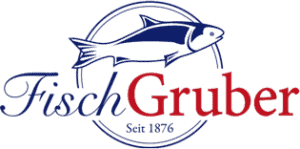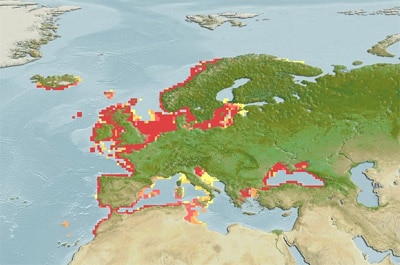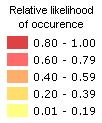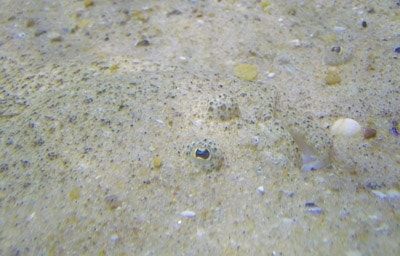- Legend for the map
- A perfectly hidden turbot
The turbot is a left-sided flat fish, meaning he has both eyes on the upper side. Turbots can grow to a maximum weight of 25kg, a length of 100cm and an age of 25 years. In shops you will usually find turbot with 50-70cm length. Very small turbots (up to 500g) are called “baby-turbot”.
The habitat
Throughout the whole north-west Atlantic you can find turbot. It is also found in the Mediterranean sea and on all European costs until the northern polar circle. In most parts of the Baltic sea, turbot is also found. A near related species (psetta maxima maeotica) can be found in the Black Sea.
An adaptable predator
Their body surface makes turbots the ideal stealth predators: Their downside is white. If they swim and another predator sees them from below, he can hardly see them against the light. On the other hand, their upper side with its muddy and olive-green colors and the surface without scales but with humps (looking like stones) fits the turbot perfectly to the sandy and stony ground of the sea. In depths of 20-70 meters the turbot hunts for small fish, crayfish and mollusks.
Between April and August turbots procreate. The female sets the roe free into the water in a depth of 10-40 meters. Depending on her size, she leaves 10-15 million (!) eggs. The male inseminates the eggs then. After 7-9 days small larvae are hatching, that start to eat in the flat waters near the cost plankton. When larvae become more and more asymmetric and reach a size of 8-10cm, they move to deeper water and start to live as predators. After approx. 5 years turbots are pubescent – and the circle of nature starts over again.
© Fisch-Gruber, 2012 – fresh turbot at Vienna’s Naschmarkt






